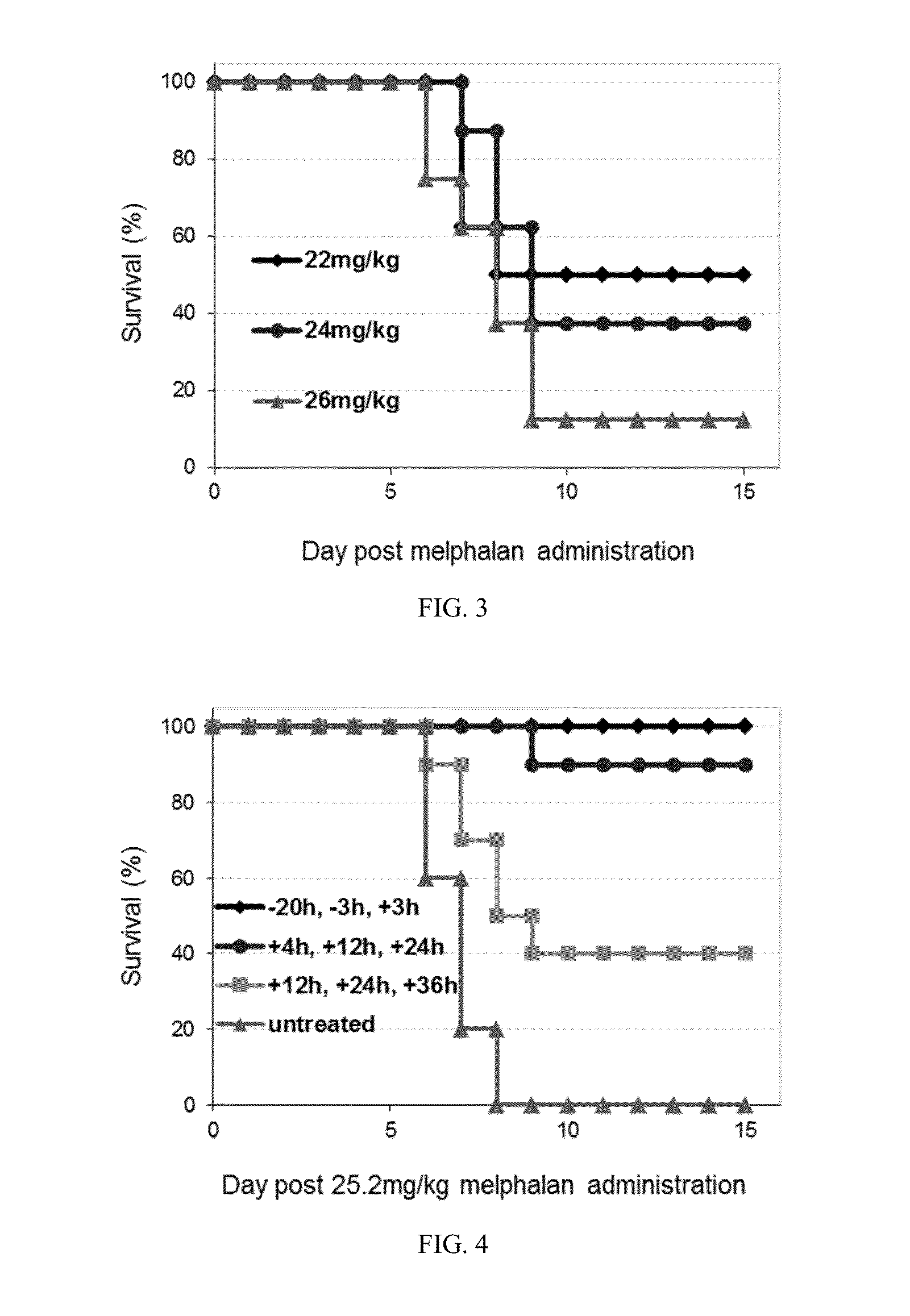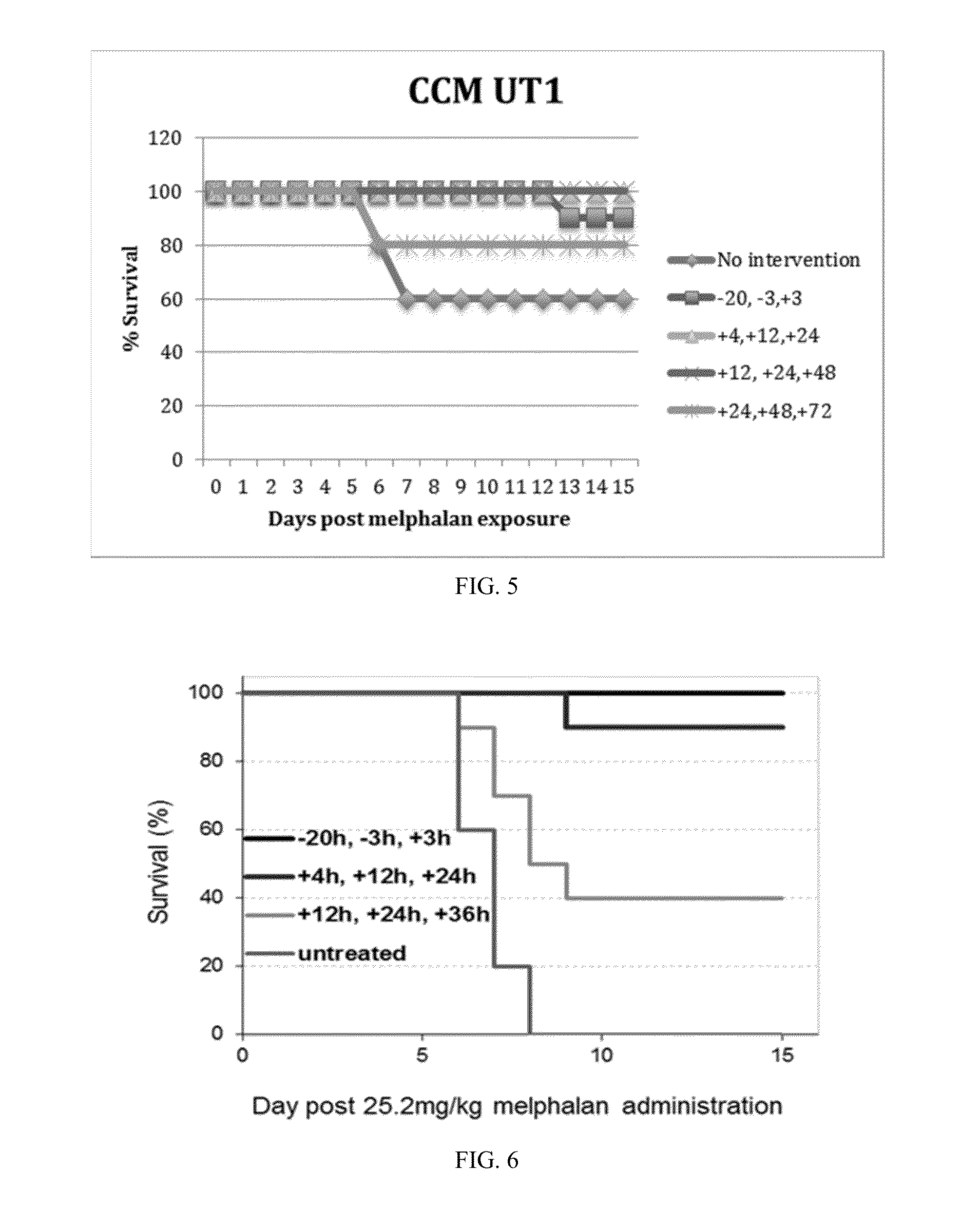Methods of reducing the effects of exposure to a mustard compound by administering RLIP76
a technology of reducing rlip76, which is applied in the direction of antinoxious agents, drug compositions, peptide/protein ingredients, etc., can solve the problems of complex mechanism of toxicity of mustard compounds, few medicinal countermeasures that could be deployed in response, and penetration of clothing and other permeable shields. to prevent or reduce the effects of exposure to a mustard compound
- Summary
- Abstract
- Description
- Claims
- Application Information
AI Technical Summary
Benefits of technology
Problems solved by technology
Method used
Image
Examples
example 1
RLIP76-PL as a Prophylactic and Mitigator to Mustard Agent Exposure
[0043]The importance of RLIP76 protein transport on cellular protection from oxidative stresses was first demonstrated by exposing mice genetically deficient in RLIP76 protein to ionizing radiation. These “knockout” mice were found to be exquisitely sensitive to radiation but could be rescued by infusion of the protein in proteoliposomes. Significantly, even in “wild-type” mice with native expression of RLIP76 protein, survival was greatly increased after lethal radiation exposure if additional RLIP76 protein was infused. Aggregate (FIG. 1) and specific examples (FIG. 2) of efficacy are shown as both a prophylactic and mitigator, respectively, with survival benefits seen with all pre- or post-exposure to radiation administrations of RLIP76 proteoliposome.
[0044]Although prophylactics have a significant clinical role, developing effective mitigators has been the bigger challenge. The ability of RLIP76 protein to act po...
PUM
| Property | Measurement | Unit |
|---|---|---|
| time | aaaaa | aaaaa |
| concentration | aaaaa | aaaaa |
| body weight | aaaaa | aaaaa |
Abstract
Description
Claims
Application Information
 Login to View More
Login to View More - R&D
- Intellectual Property
- Life Sciences
- Materials
- Tech Scout
- Unparalleled Data Quality
- Higher Quality Content
- 60% Fewer Hallucinations
Browse by: Latest US Patents, China's latest patents, Technical Efficacy Thesaurus, Application Domain, Technology Topic, Popular Technical Reports.
© 2025 PatSnap. All rights reserved.Legal|Privacy policy|Modern Slavery Act Transparency Statement|Sitemap|About US| Contact US: help@patsnap.com



